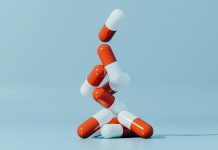
Liver disease is often associated with a variety of symptoms, including some that may not seem directly related to liver function at first glance.
Among these, joint and muscle pain are surprisingly common, yet they are frequently overlooked in discussions about liver health.
This review explores the link between liver disease and these types of pain, shedding light on why they occur and how they can be managed.
The liver is essential for various bodily functions, including detoxifying harmful substances, aiding digestion, and regulating metabolism.
When the liver is damaged, whether due to disease, excessive alcohol consumption, or other factors, its ability to perform these functions can be severely impaired. This impairment can lead to a cascade of symptoms throughout the body, including in the joints and muscles.
Why Does Liver Disease Cause Joint and Muscle Pain?
Inflammation: Liver diseases, such as hepatitis and cirrhosis, often lead to inflammation. This inflammation isn’t limited to the liver itself and can spread, causing systemic effects. Inflammatory substances released by the liver can circulate throughout the body, leading to joint and muscle pain.
Accumulation of Toxins: A healthy liver filters toxins out of the blood, but when the liver is diseased, this process can be compromised. The build-up of toxins like bilirubin can contribute to feelings of discomfort and pain in the muscles and joints.
Nutritional Deficiencies: Liver disease can affect the body’s ability to process and store certain nutrients essential for muscle and joint health. For example, vitamin D deficiency, which is common in individuals with liver disease, is closely linked to muscle pain and weakness.
Similarly, vitamin E and certain B vitamins, crucial for nerve and muscle function, may also be deficient.
Autoimmune Reactions: Some liver diseases are autoimmune in nature, meaning the body’s immune system attacks its own liver cells. This autoimmune response can sometimes target other parts of the body, including joints and muscles, leading to pain and inflammation.
Hormonal Changes: The liver plays a crucial role in regulating hormones. Liver disease can disrupt hormone levels, leading to conditions like adrenal insufficiency, which can cause joint and muscle pain.
Evidence from Research
Recent studies have highlighted the prevalence of musculoskeletal pain in patients with liver disease. A notable study published in 2023 found that over 60% of patients with chronic liver disease reported experiencing muscle cramps and joint pain.
Further research has shown that treating vitamin deficiencies and managing inflammation can significantly alleviate these symptoms.
Managing Joint and Muscle Pain in Liver Disease
Managing joint and muscle pain effectively requires addressing the underlying liver condition and its associated symptoms:
Medical Treatment: Medications that reduce liver inflammation or treat the underlying liver disease can help alleviate joint and muscle pain. For example, antiviral drugs for hepatitis can reduce liver inflammation and subsequently decrease pain.
Nutritional Support: Supplementing with vitamins D, E, and B complex may help reduce deficiencies related to liver disease. However, it’s important to consult with a healthcare provider before starting any supplements, as some may interfere with liver function.
Physical Therapy and Exercise: Regular, gentle exercise and physical therapy can strengthen muscles, reduce stiffness, and improve overall well-being. It’s crucial to tailor these activities to individual capabilities and health status.
Pain Management: For severe pain, physicians may recommend over-the-counter pain relievers such as acetaminophen. However, caution is advised, particularly with medications like NSAIDs or higher doses of acetaminophen, as these can further harm the liver.
In conclusion, joint and muscle pain are common yet underrecognized symptoms of liver disease. Understanding this connection allows for better symptom management and improves quality of life for those affected.
As always, effective treatment should involve close consultation with healthcare providers who can tailor interventions to the specific needs and conditions of the patient.
If you care about pain, please read studies about vitamin K deficiency linked to hip fractures in old people, and these vitamins could help reduce bone fracture risk.
For more information about wellness, please see recent studies that Krill oil could improve muscle health in older people, and eating yogurt linked to lower frailty in older people.
Copyright © 2024 Knowridge Science Report. All rights reserved.



